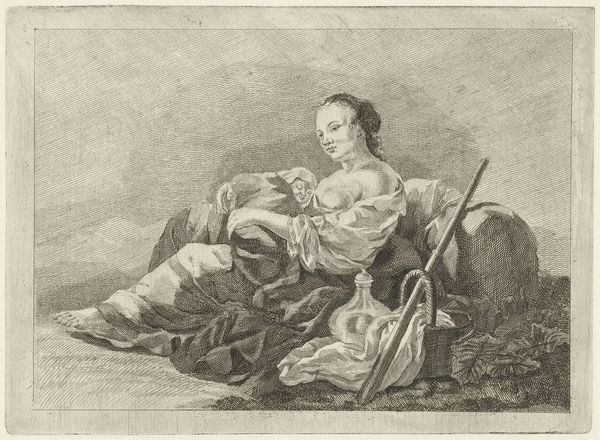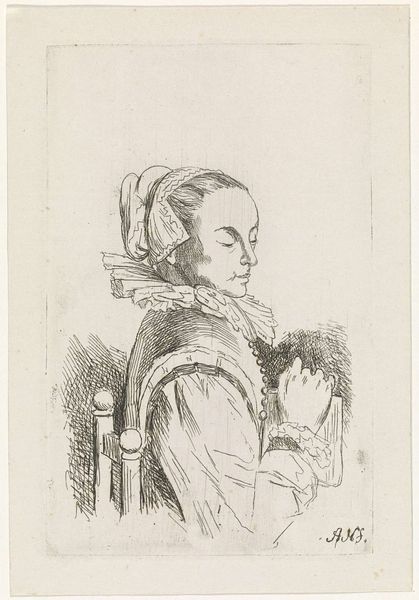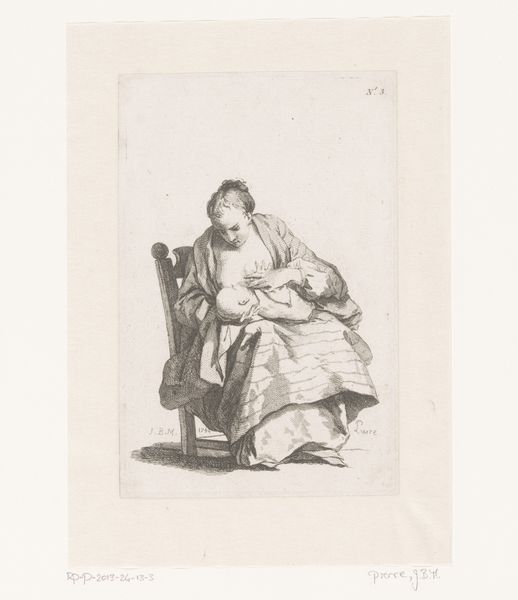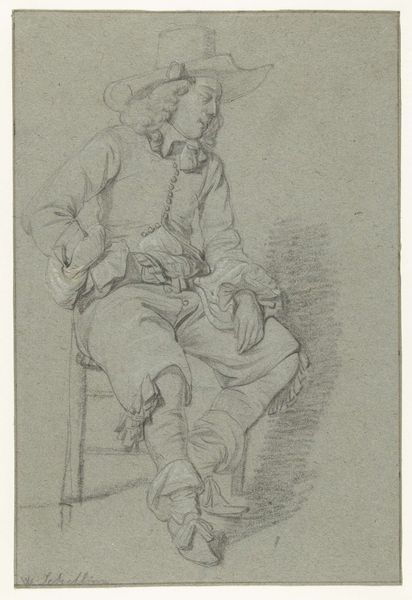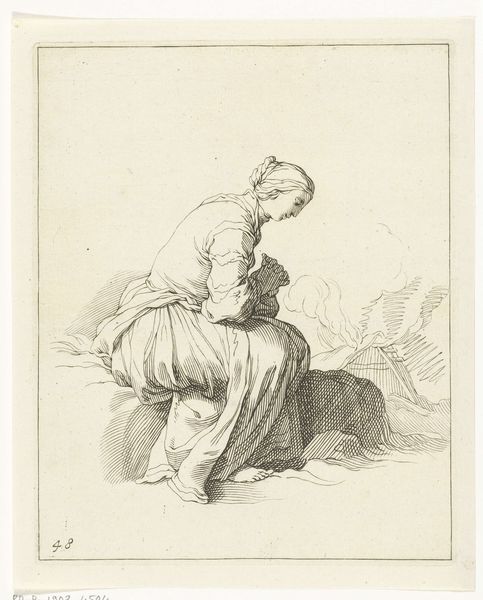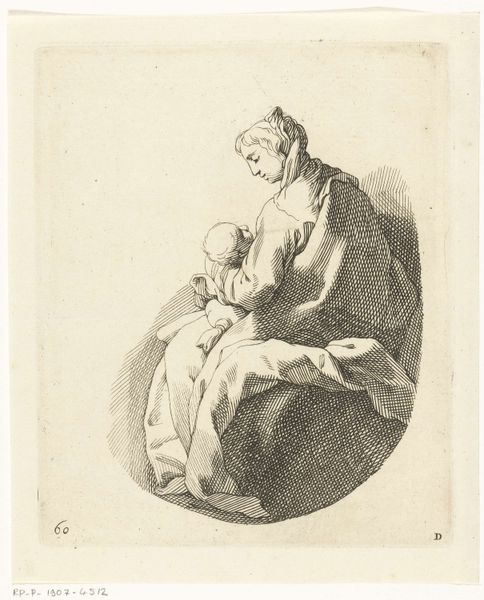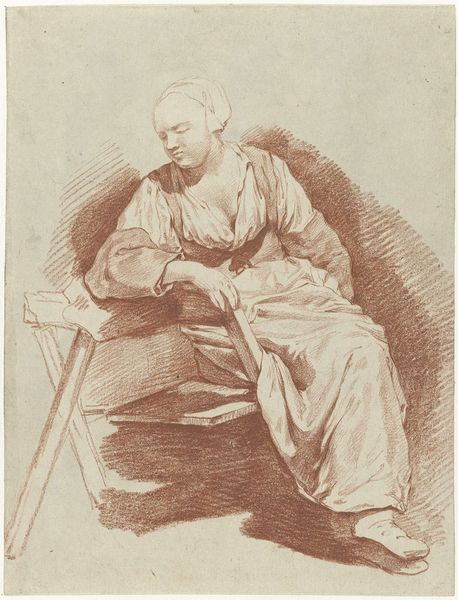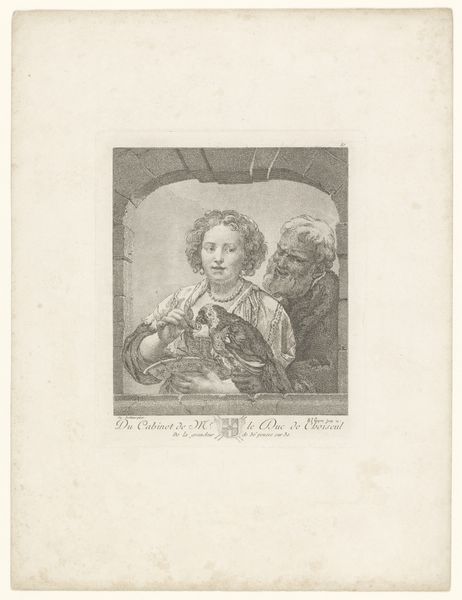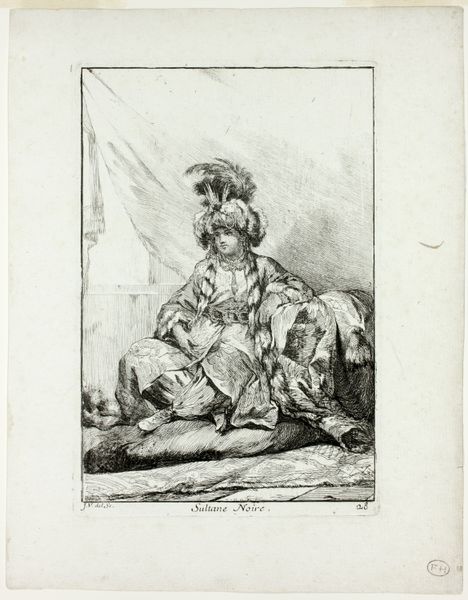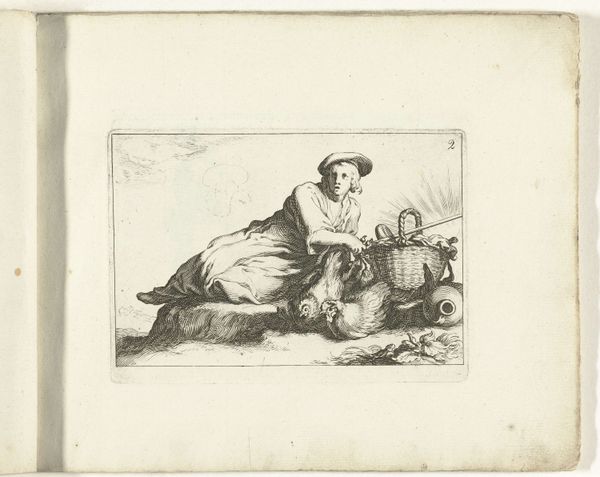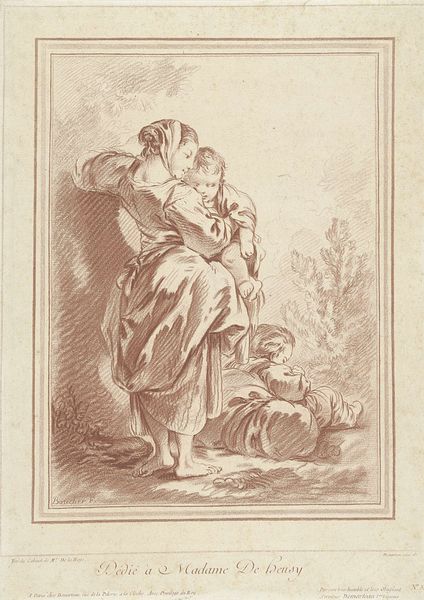
Dimensions: height 206 mm, width 280 mm
Copyright: Rijks Museum: Open Domain
Curator: Here we have Pieter de Mare’s "Herderin met kind," an engraving, dating approximately from 1768 to 1796. The print depicts a woman with a child. Editor: There’s something striking about the interplay of light and shadow in this image. It creates a very intimate and perhaps idealized portrayal of motherhood. I’m initially struck by the stillness of the scene. Curator: Yes, the baroque influence is quite evident. The artist's rendering of the composition creates a balance between light and shadow that speaks to the semiotic tradition, emphasizing a maternal narrative. It evokes the canon of a painting. The lines create form and definition. Editor: Beyond the aesthetic elements, this representation touches on important historical conversations about the construction of motherhood. During this period, what were the predominant social expectations for women and childcare, especially for those engaged in rural labor? Curator: The technique of engraving allows for detailed depiction but it also somewhat limits emotional expression. Despite that limitation, the woman's expression is calm. Editor: Absolutely. The artist’s deliberate staging of this domestic pastoral idyll should provoke a discussion of whose ideals are reflected, whose realities are obscured, and how these historical constructs shape present-day discussions on care and labour. Curator: Certainly. This technique renders minute detail, guiding the eye towards an almost textural observation of familial bonds. The texture suggests volume through light. Editor: Exactly, that’s the complexity we need to wrestle with. This image functions on multiple levels, it visually communicates specific ideas about womanhood in the late 18th century while also suggesting what that experience may not always have been. It leaves one wondering how this idealized genre-painting can also function as social commentary. Curator: Indeed, de Mare’s print is an interesting study of form meeting context. Thank you for sharing those insights. Editor: Thank you. Considering it in these historical terms gives us a richer perspective on the relationship between art, life, and social change.
Comments
No comments
Be the first to comment and join the conversation on the ultimate creative platform.
